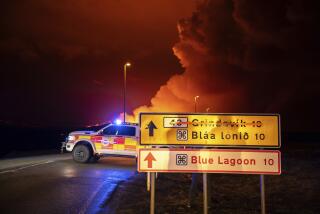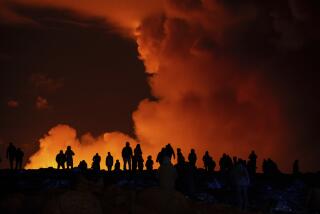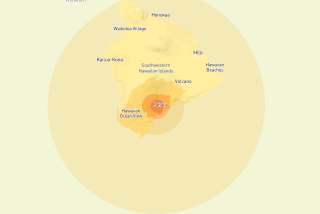Hawaii’s volcanic park reopens more than four months after Kilauea’s eruption

A national park in Hawaii has reopened more than four months after Kilauea volcano’s latest eruption, which caused widespread damage to park infrastructure and dramatically changed its landscape.
Hawaii Volcanoes National Park officials said Saturday there were no lines for visitors to catch a glimpse of the volcano that made headlines across the world when it began erupting in May.
The eruption destroyed hundreds of homes outside the park while changing the popular summit crater inside the park.
The national park — normally the state’s most-visited tourist attraction — had been closed for 135 days as volcanic activity caused explosive eruptions, earthquakes and the collapse of the famed Halemaumau crater. Ash clouds shot skyward from the summit crater and blanketed the region in volcanic debris.
Kilauea has been active for decades. But the eruption that began in May transformed the park and the rural Big Island coastline that surrounds it.
Outside the park, lava flows consumed entire neighborhoods, filled an ocean bay and created miles of new shoreline with fresh black sand beaches and jagged rocky outcrops.
Inside the park, molten rock drained from the summit lava lake and vanished from view as the landscape underwent a monumental change.
The summit crater floor sank 1,500 feet, and the overall Kilauea caldera widened — expanding more than a square mile, according to the U.S. Geological Survey. It quadrupled in size as lava drained out of the active vent.
“This eruption was really unprecedented in the historic record,” said Ingrid Johanson, a research geophysicist at the U.S. Geological Survey’s Hawaiian Volcano Observatory. “The changes we’ve seen at the summit are much more dramatic than anything that’s happened in the last 200 years.”
The crater looks “completely different,” Johanson said. “I think people are going to be really awestruck when they see it.”
However, one of the park’s biggest draws — the radiant red light from the lava lake that has been a Kilauea hallmark for over a decade — is gone.
“There is no glow at all,” said Shanelle Saunders, the park’s acting spokeswoman. “You can’t even see your hand in front your face it’s so dark in a lot of these areas. I mean, the stars right now are incredible, but there’s actually no flowing lava.”
The park will be open 24 hours a day, but visitors should be careful at night because of new cracks in trails and walkways.
“Even if people are really familiar with those trails, they may have changed since they’ve been here,” Saunders said.
Public access to the volcano remains limited because of damage to its infrastructure.
But visitors can once again hike around some parts of the summit area and see the aftermath of the eruption.
“The crater rim trail is open to a certain point,” Saunders said. “And from there, they can see down into the crater itself.”
While volcanic activity has slowed significantly in the last month and no lava is reaching the surface at Kilauea, scientists aren’t ready to declare the latest eruption over.
“There is still material that could feed into an eruption,” Johanson said. “I definitely expect that lava will return one day.”
More to Read
Start your day right
Sign up for Essential California for news, features and recommendations from the L.A. Times and beyond in your inbox six days a week.
You may occasionally receive promotional content from the Los Angeles Times.






